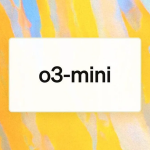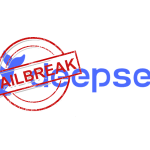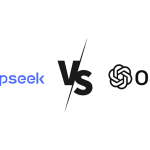- Rockstar 2FA Phishing: The Latest Threat Bypassing MFA Security
- What Is Rockstar 2FA Phishing?
- How Does Rockstar 2FA Phishing Work?
- Why Rockstar 2FA Phishing Is a Game Changer
- The Growing Threat of Rockstar 2FA Phishing
- Mitigating Rockstar 2FA Phishing Attacks
- Implications of Rockstar 2FA Phishing for Cybersecurity
- Conclusion
Rockstar 2FA Phishing: The Latest Threat Bypassing MFA Security
Phishing attacks have become more sophisticated, and the emergence of Rockstar 2FA phishing marks a dangerous new chapter in cybersecurity threats. This phishing-as-a-service (PhaaS) platform leverages advanced adversary-in-the-middle (AiTM) techniques to bypass multifactor authentication (MFA) and compromise Microsoft 365 accounts. With its user-friendly features and advanced evasion tactics, Rockstar 2FA phishing is rapidly gaining traction among cybercriminals, putting organizations worldwide at risk.
What Is Rockstar 2FA Phishing?
Rockstar 2FA phishing is a cutting-edge PhaaS platform designed to simplify and amplify phishing campaigns. It uses AiTM techniques to intercept authentication cookies during legitimate login processes, bypassing MFA protections. These stolen cookies grant attackers direct access to accounts, making even MFA-protected systems vulnerable.
This platform has gained popularity in the cybercrime ecosystem due to its affordability and robust feature set. Starting at $200 for a two-week subscription, Rockstar 2FA phishing is accessible to both seasoned hackers and less technical cybercriminals.
How Does Rockstar 2FA Phishing Work?
At its core, Rockstar 2FA phishing facilitates large-scale credential theft by mimicking legitimate login processes. Here’s a breakdown of its attack flow:
- Phishing Email Campaigns:
Attackers craft realistic emails impersonating trusted organizations like IT departments or payroll teams. These emails often contain malicious links, QR codes, or attachments designed to lure victims into clicking. - Redirection to Fake Login Pages:
Victims are directed to a phishing page that replicates a Microsoft 365 login screen. - Screening and Filtering:
Cloudflare Turnstile CAPTCHA integration ensures only valid targets are directed to the phishing page. Bots, researchers, and out-of-scope visitors are redirected to harmless decoy pages. - Credential Interception:
When a victim enters their credentials, Rockstar 2FA phishing forwards them to Microsoft’s servers to complete the authentication process. - Session Cookie Theft:
The AiTM server intercepts the authentication cookie, which allows attackers to bypass MFA and gain direct access to the victim’s account.
Why Rockstar 2FA Phishing Is a Game Changer
The Rockstar 2FA phishing platform represents an evolution of previous phishing kits like DadSec and Phoenix, offering enhanced capabilities and broader appeal. Key features include:
- Support for Multiple Platforms:
Rockstar 2FA phishing targets not only Microsoft 365 but also Hotmail, GoDaddy, and Single Sign-On (SSO) solutions. - Dynamic Evasion Tactics:
Randomized source code and links, combined with Cloudflare Turnstile CAPTCHA, reduce the likelihood of detection. - Customizable Login Pages:
The platform automatically applies branding, such as logos and backgrounds, to make phishing pages appear authentic. - User-Friendly Interface:
Its admin panel simplifies phishing operations with real-time logs, backups, and automation tools.
The Growing Threat of Rockstar 2FA Phishing
Since its debut in August 2024, Rockstar 2FA phishing has established over 5,000 phishing domains. Trustwave researchers highlight its role in disseminating phishing campaigns that exploit legitimate email platforms and compromised accounts to spread malicious messages. Common lures include:
- Document-sharing notifications
- IT department alerts
- Password reset requests
- Payroll updates
These emails often use block evasion methods, such as QR codes, shortened URLs, and embedded PDFs, to bypass security filters. The scale and sophistication of Rockstar 2FA phishing highlight the increasing accessibility of advanced cybercrime tools.
Mitigating Rockstar 2FA Phishing Attacks
The rise of Rockstar 2FA phishing underscores the importance of proactive cybersecurity measures. Here are actionable steps organizations can take:
1. Strengthen Authentication Processes
Move beyond traditional MFA and adopt phishing-resistant methods, such as FIDO2 authentication or hardware security keys.
2. Enhance Email Security
Deploy advanced email filtering solutions to detect and block phishing emails. Train employees to recognize and report suspicious messages.
3. Monitor and Respond to Threats
Use endpoint detection and response (EDR) tools to identify unusual behavior and respond to breaches swiftly.
4. Shorten Session Durations
Reduce the lifespan of authentication cookies to limit their usefulness if intercepted.
5. Conduct Regular Security Audits
Perform routine audits to identify vulnerabilities in systems, processes, and user behaviors.
Implications of Rockstar 2FA Phishing for Cybersecurity
The proliferation of Rockstar 2FA phishing reflects a growing trend of accessible and effective cybercrime tools. As attackers continue to innovate, organizations must adapt to stay ahead. Key concerns include:
- Increased Risk for Businesses: MFA alone is no longer a sufficient defense.
- Higher Volume of Phishing Campaigns: Tools like Rockstar 2FA phishing automate and scale attacks.
- Erosion of Digital Trust: Phishing campaigns leveraging trusted brands undermine user confidence.
The persistence of platforms like Rockstar 2FA phishing highlights the need for a multi-layered approach to cybersecurity.
Conclusion
The emergence of Rockstar 2FA phishing illustrates the evolving nature of phishing attacks and their growing sophistication. By leveraging AiTM techniques to bypass MFA and intercept session cookies, Rockstar 2FA phishing poses a significant threat to Microsoft 365 users and beyond. Organizations must prioritize advanced defenses, employee education, and proactive threat detection to mitigate risks.
Want to stay informed about emerging cyber threats? Check out our comprehensive guide to phishing attacks. Share this article with your team to help raise awareness about the risks of Rockstar 2FA phishing and learn how to protect your organization.






